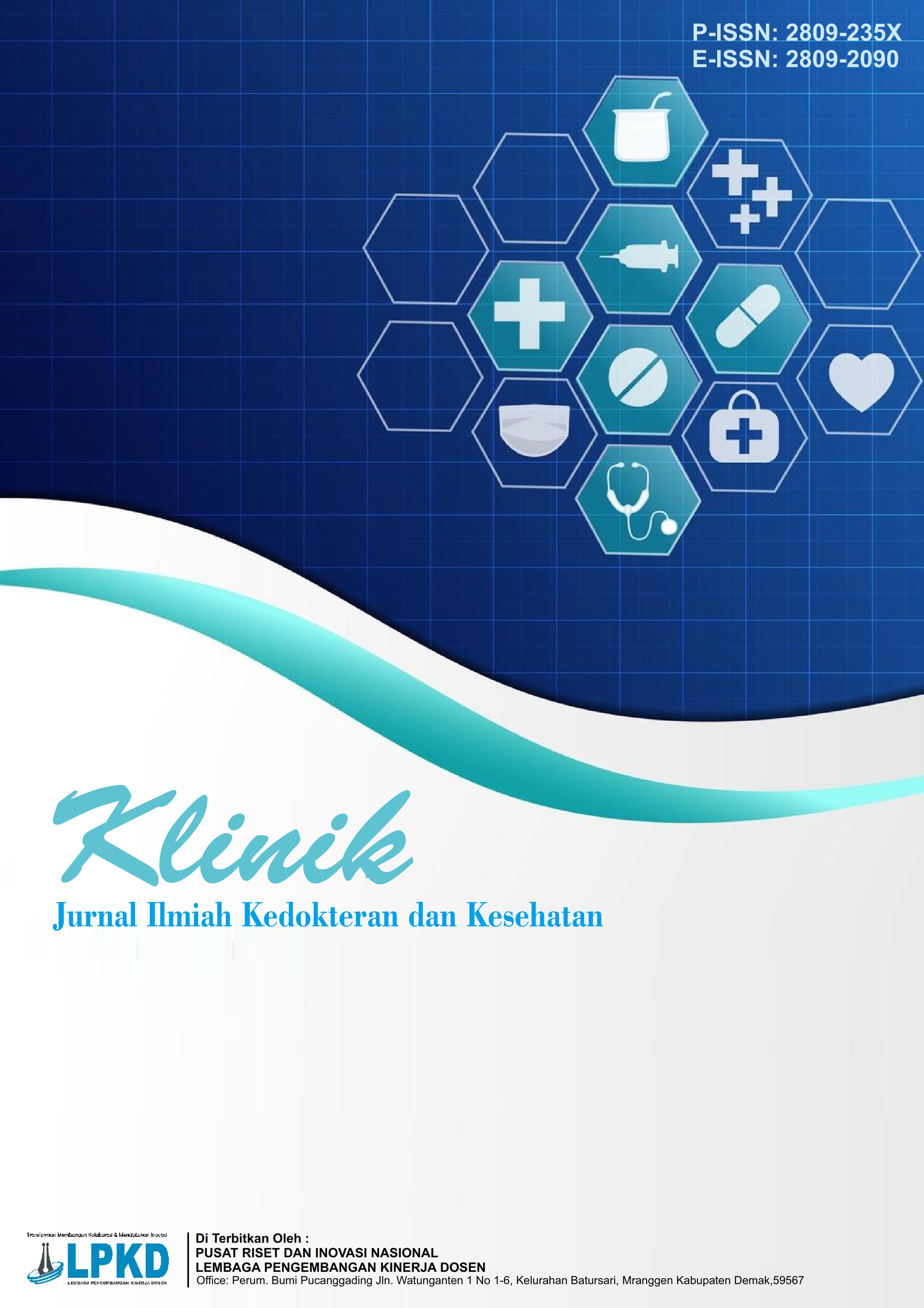Penatalaksanaan Fisioterapi Pada Kasus Cerebral Palsy dengan Komorbiditas Epilepsi Aktif
DOI:
https://doi.org/10.55606/klinik.v4i3.4775Keywords:
Cerebral Palsy, Epilepsy, Motor Control, and PhysiotherapyAbstract
Cerebral palsy (CP) is a complex neurological disorder that often coexists with other conditions, such as active epilepsy. The interaction between these conditions can significantly impact developmental and functional outcomes in affected children. The primary objective of this study was to explore the impact of active epilepsy on the physiotherapy management of children with cerebral palsy. This study used a clinically reviewed case study approach to assess the relationship between active epilepsy and rehabilitation outcomes in children with CP. The results indicate that active epilepsy significantly impacts the developmental and functional outcomes of children with cerebral palsy. In particular, the presence of seizures can lead to increased vulnerability of neural networks, especially in critical areas such as the cerebral cortex and temporal lobe, which are important for regulating brain activity. The presence of uncontrolled seizures will negatively impact the effectiveness of rehabilitation therapy. The presence of active epilepsy in children with cerebral palsy requires rapid pharmacological intervention to reduce its effects on development and function. Effective physiotherapy management must take into account the complexity of both conditions to improve rehabilitation outcomes. Integration of targeted interventions, such as sensorimotor stimulation and movement re-patterning, is essential to improve motor control and movement quality in children.
References
Centers for Disease Control and Prevention. (2020). Statistics for cerebral palsy. https://www.cdc.gov (Accessed July 18, 2020)
Dos Santos Rufino, A., Påhlman, M., Olsson, I., & Himmelmann, K. (2023). Characteristics and challenges of epilepsy in children with cerebral palsy—A population-based study. Journal of Clinical Medicine, 12(1), 346. https://doi.org/10.xxxx/jcm12010346
Effgen, S. K. (2012). Meeting the physical therapy needs of children. FA Davis.
Freeman, J. M., & Nelson, K. B. (1988). Intrapartum asphyxia and cerebral palsy. Pediatrics, 82(2), 240–249.
Günel, M. K. (2011). Physiotherapy for children with cerebral palsy. In Epilepsy in children—Clinical and social aspects. Citeseer.
Haenggeli, C.-A., & Suter-Stricker, S. (2007). Freeman Miller, Steven J. Bachrach (Eds): Cerebral palsy. A complete guide for caregiving: Johns Hopkins University Press, Baltimore, 2006. European Journal of Pediatrics, 166, 1311–1311. https://doi.org/10.xxxx/ejp1661311
Kurniawan, D. G., & Rahman, I. (2021). Penatalaksanaan fisioterapi pada kasus cerebral palsy spastik kuadriplegi dengan menggunakan neurodevelopment treatment di RSUD Cikalong Wetan Kabupaten Bandung Barat. Jurnal Health and Physiotherapy, 3(3), 111–117.
Latuputty, V. P., Qolbu, A. H., & Alpiah, D. N. (2025). Pengaruh massage pada kasus cerebral palsy. Jurnal Health and Multidisciplinary, 2(1).
Rahmat, D., Mangunatmadja, I., Tridjaja, B., Tambunan, T., & Suradi, R. (2010). Prevalence and risk factors for epilepsy in children with spastic cerebral palsy. Paediatrica Indonesiana, 50(1), 11–17.
Rentschler, M. J. (2008). The Masgutova Method of Neuro-Sensory-Motor and Reflex Integration: Key to health, development and learning. Patterns, 15(4), 2016.
Ronen, G. M., Buckley, D., Penney, S., & Streiner, D. L. (2007). Long-term prognosis in children with neonatal seizures: A population-based study. Neurology, 69(19), 1816–1822. https://doi.org/10.xxxx/neurology.2007.69.19
Sadowska, M., Sarecka-Hujar, B., & Kopyta, I. (2020). Evaluation of risk factors for epilepsy in pediatric patients with cerebral palsy. Brain Sciences, 10(8), 481. https://doi.org/10.xxxx/brainsci10080481
Sellier, E., Uldall, P., Calado, E., Sigurdardottir, S., Torrioli, M. G., Platt, M. J., & Cans, C. (2012). Epilepsy and cerebral palsy: Characteristics and trends in children born in 1976–1998. European Journal of Paediatric Neurology, 16(1), 48–55. https://doi.org/10.xxxx/ejpn.2011.09.002
Sopandi, M. A., & Nesi, N. (2021). Fisioterapi pada kasus cerebral palsy. Indonesian Journal of Health Sciences, 1(2), 47–50.
Trisnowiyanto, B., & Utomo, B. (2023). Physiotherapy modalities and their effect on the development of functional ability in children with cerebral palsy. Jurnal Kesehatan, 13(1), 17–26.
Yulianti, R., Gunawan, P. I., & Saharso, D. (2021). Comparison of clinical characteristics and neuroimaging of cerebral palsy with and without epilepsy in children. International Journal of Forensic Medicine and Toxicology, 15(1), 1442–1450.
Zelnik, N., Konopnicki, M., Bennett-Back, O., Castel-Deutsch, T., & Tirosh, E. (2010). Risk factors for epilepsy in children with cerebral palsy. European Journal of Paediatric Neurology, 14(1), 67–72. https://doi.org/10.xxxx/ejpn.2009.06.005
Downloads
Published
How to Cite
Issue
Section
License
Copyright (c) 2025 Jurnal Ilmiah Kedokteran dan Kesehatan

This work is licensed under a Creative Commons Attribution-ShareAlike 4.0 International License.








